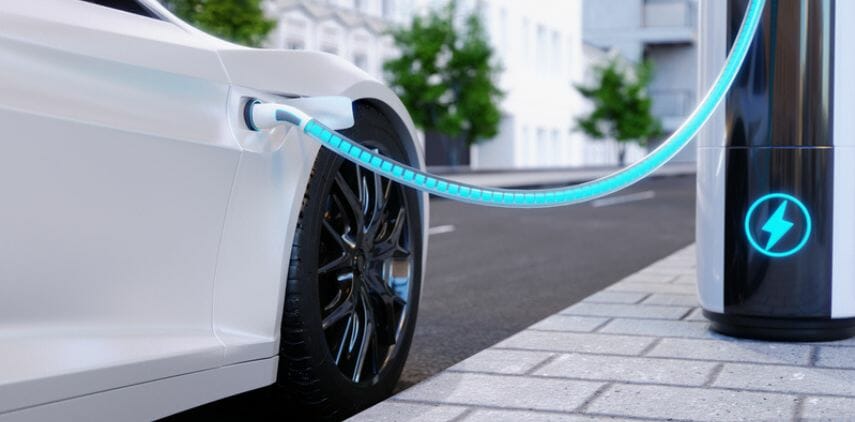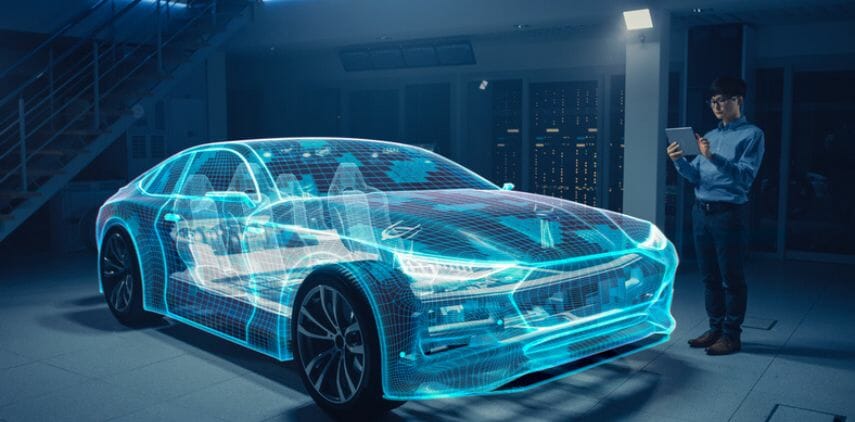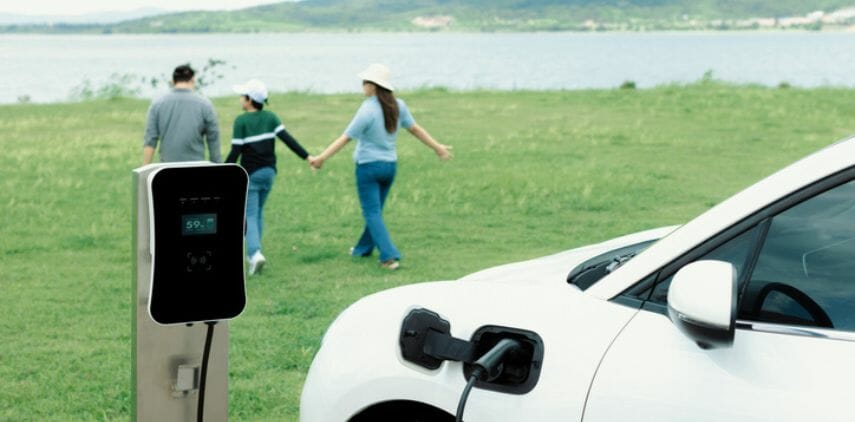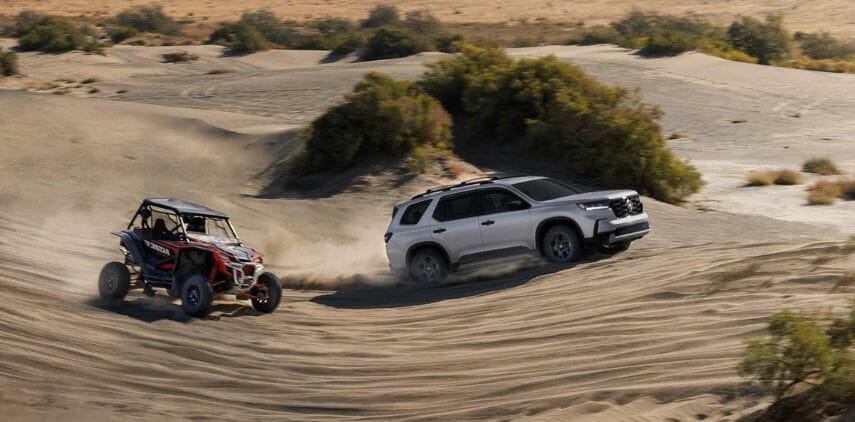Overview
A brand new car is an opportunity for new features. However, some car features are better off left in the dust. Check out these five unsuitable features for any new car or SUV and alternatives you should consider.
-
Table of Contents
Adaptive Headlights
Adaptive headlights, as the name suggests, are headlights that adapt their position to the direction you’re turning. In theory, they’re meant to help you see, but the way that they work shows that adaptive headlights may not have been the brightest idea.
Why It’s Best Avoided
Adaptive headlights don’t adjust their positioning based on the lanes; instead, they rely on your steering wheel to know which way to turn. This can prove dangerous when making sharp turns since the headlights no longer point ahead. If you’re turning at an intersection or making a three-point turn, for example, you won’t be able to see who or what’s in front of you.
What to Get Instead
Rather than adaptive headlights, look for automatic headlights instead. Automatic headlights use a light sensor to determine how much daylight you have outside and activate the high beams once it gets dark out, without you needing to turn them on manually. This feature can also detect when another driver is approaching and turn down the brightness so that the other driver can still see.
-
Touchscreen Infotainment Systems
Once solely a feature of ultramodern cars and luxury SUVs, screens are becoming increasingly commonplace in many cars. Some newer vehicles have tried to take this further by building touchscreen displays. Unfortunately, while many smart devices have excelled due to their touchscreens, car display touchscreens have proven surprisingly out of touch.
Why It’s Best Avoided
While some touchscreen systems are well-designed and easy to use, the vast majority are incredibly fiddly or outright unresponsive at times. This is not only frustrating but potentially dangerous: the more time you spend focused on trying to select the proper command, the less focused you are on the road.
What to Get Instead
If you’re looking for a good infotainment system for your car, choose one that you can sync with your phone. Many infotainment systems are compatible with Bluetooth, Apple CarPlay, or Android Auto. Some cars also provide USB ports that allow you to connect your phone directly to the system with the bonus of charging your phone.
As for the controls themselves, stick with the systems controlled by buttons or knobs. They’re more reliable than touchscreens.
-
Lane Departure Warning Systems
Many modern cars come equipped with lane departure warning, a system that checks to see if you’re drifting out of your lane and alerts you. Some vehicles will automatically steer you back into your lane as well. While a growing number of automated safety systems are considered a significant improvement, lane departure systems are somewhat ironically an example of automation failing to stay in its lane.
Why It’s Best Avoided
While the lane-departure warning is a well-intended safety feature, it doesn’t always work that well in practice. Some systems are overly vigilant, providing an unpleasant symphony of alert sounds and buzzing throughout your drive. Other vehicles have lane departure systems that aren’t particularly attentive to the lanes themselves, negating much of the feature’s purpose.
What to Get Instead
When it comes to automatic safety features, automatic emergency braking is a far better choice. Unlike lane departure warning systems, automatic braking is far more reliable. It relies on sensors to detect whether there’s something ahead of you and automatically brakes to avoid colliding with it. Collisions can still occur, but they’re not as likely.
If automatic braking isn’t in your budget, blind-spot detection systems are another excellent choice. These also make use of sensors, but this feature doesn’t take control of the car; instead, it provides a visual cue like a light on your side view mirrors to let you know there’s somebody in your blind spot. Depending on the vehicle, it might also provide another cue if you activate your blinker, like beeping at you.
-
Perforated Seats
Many vehicles come with relatively flat seats. On the other hand, perforated seats contain creases in the seat fabric or leather. While they can make the interior of even a midsize SUV feel sleek and athletic, these seats certainly aren’t for everybody.
Why It’s Best Avoided
Perforated seats might look nice, but they can be particularly annoying to keep that way. If you spill something on the seat, getting the muck out of the nooks and crannies is much harder. You’ll spend a lot of time and effort trying to get the gunk out; if you can’t, the seats risk being unsightly.
What to Get Instead
Temperature-controlled seats are a much more appealing alternative to perforated seats. The most common option is heated seats, but ventilated seats, sometimes air-conditioned seats, are becoming more widespread. When it’s chilly out or when you’ve been sweating all day, sinking into a cozy or breezy seat can be a great reprieve.
Most vehicles only offer temperature-controlled front seats, but the feature can also be found in the back seats of particular car and SUV models. Some manufacturers have even taken the comfort to another level by adding heating pads to steering wheels so that you don’t have to be chilly on winter mornings.
-
Adaptive Cruise Control
Adaptive cruise control is a semi-automated form of cruise control that changes speed based on the other cars it senses around you. Despite its benefits, this feature doesn’t necessarily translate to smooth sailing on the road.
Why It’s Best Avoided
While adaptive cruise control is generally safe, it’s not built to handle erratic driving. If somebody swerves or brakes right in front of you, your car’s cruise control can’t necessarily slow down quickly enough. Chances are, if you’re using cruise control, you might not be ready to brake quickly enough, leaving you vulnerable to a collision unless your vehicle also has automated braking.
What to Get Instead
Since adaptive cruise control might be better described as a pseudo-safety feature, replacing it with a verified safety feature makes the most sense. Backup cameras are a mainstay of the safest SUVs and cars, to the point that the law requires them on all vehicles from 2018 onwards.
Rear-cross traffic warning is another safety feature worth investigating. If your vehicle’s rear sensors or backup camera notice someone is about to cross behind you, it gives you a heads-up so that you don’t back into them.
Find the Best Car Features with SUViews
When buying a new car, you likely want to choose the model with the most useful features, not the most gimmicky ones. At SUViews, we provide plenty of reviews on new SUVs to help you pick the right SUV and tips and tricks for avoiding useless or annoying features.
With the proper guidance, you won’t have to pick features simply based on whether they’re old or new; instead, you’ll choose features based on whether they’re right for you.






